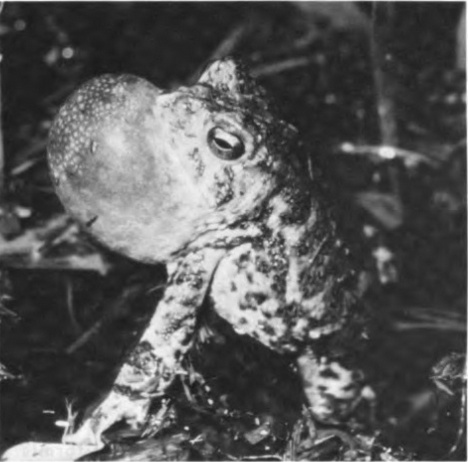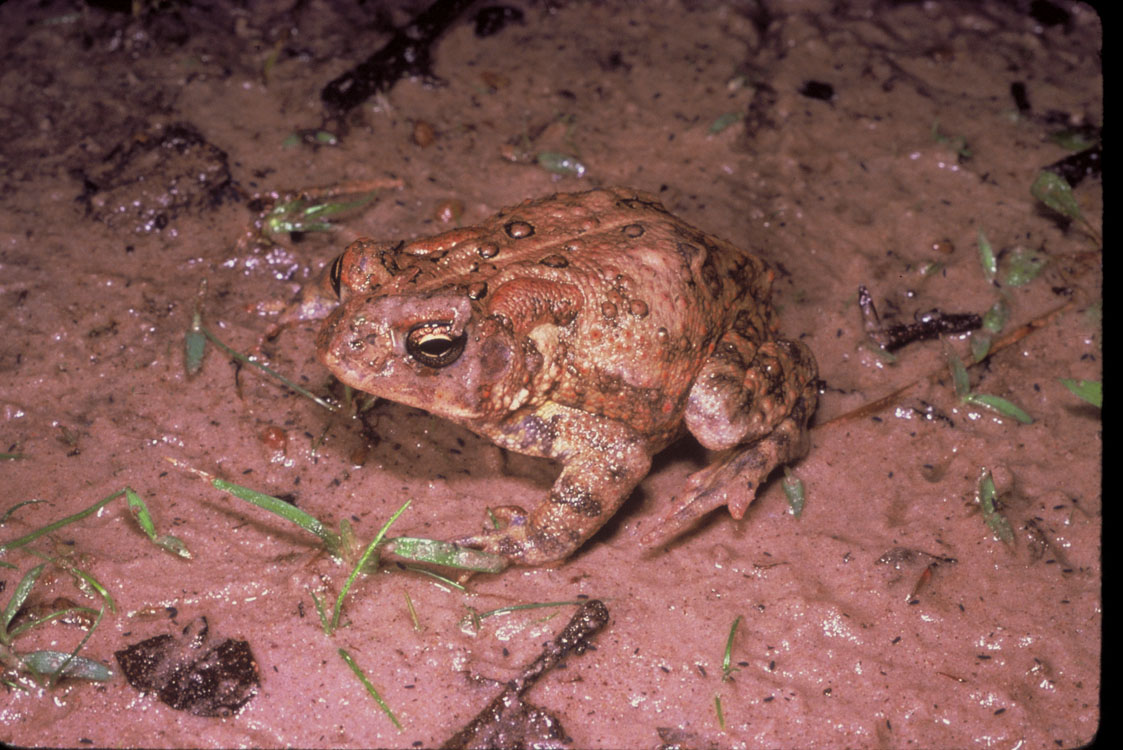- Introduction: The Forgotten Voice of Texas
- Taxonomy and Classification: Understanding the Houston Toad's Lineage
- Natural Habitat: Life Under the Pine-Oak Canopy
- Physical Characteristics: Small but Striking
- Behavior and Life Cycle: Chorus Under the Stars
- Ecological Role: Indicators of Habitat Health
- Threats and Conservation Status: A Species in Jeopardy
- Cultural and Scientific Significance: Beyond Mere Survival
- Conclusion: Protecting a Fragile Legacy
Introduction: The Forgotten Voice of Texas#
In the humid twilight of a subtropical Texas evening, a gentle chorus of bubbling trills echoes through the pine-oak woodlands. To the untrained ear, the melodic call blends seamlessly into the orchestra of night creatures. Yet amidst this familiar nocturnal soundtrack resides an enchantingly vulnerable voice—the elusive Anaxyrus houstonensis, affectionately known as the Houston Toad.
This small amphibian, categorized scientifically as Anaxyrus houstonensis, confronts significant peril despite its remarkable ecological significance and fascinating biology. Classified as endangered, the Houston Toad’s survival symbolizes the delicate balance of harmony between human activity and nature’s pristine conditions. Once abundant throughout East-Central Texas, today, this creature offers both cautionary and hopeful lessons about conservation in modern ecosystems.
Taxonomy and Classification: Understanding the Houston Toad’s Lineage#
The Houston Toad belongs to the Bufonidae family, the extensive family of “true toads.” Within this family, it is grouped under the genus Anaxyrus, which contains species formerly classified under the genus Bufo. Its precise scientific name is Anaxyrus houstonensis, reflecting both its genus affiliation and geographic identification.
Initially described scientifically in 1953 by biologist Donald W. Sanders, this rare toad was recognized for its distinct morphology and limited geographic distribution around Houston, Texas. Previous confusion often arose due to morphological similarity with closely related species such as Anaxyrus americanus (American Toad). However, careful morphological and genetic assessments have clearly established the Houston Toad as an independent and genetically distinct species.
Natural Habitat: Life Under the Pine-Oak Canopy#
Historically, the Houston Toad inhabited vast expanses of sandy pine-oak forests across the Texas coastal plains and parts of East-Central Texas. These habitats, characterized by sandy, porous soils, gentle slopes, and intermittent wetlands, provided the ideal substrate for their burrowing lifestyle. Today, remnant populations cling to isolated woodlots and fragmented habitats, mainly concentrated in Bastrop County and small pockets within surrounding counties.
A Delicate Balance of Terrestrial and Aquatic Needs#
Unlike some amphibians strictly confined to streams or ponds, the Houston Toad lives primarily in terrestrial habitats, venturing into temporary water bodies only to breed. These seasonally filled ponds, puddles, and ditches define their reproductive activities and larval development. Sandy soils offer protection during dry, harsh conditions, providing burrowing locations necessary for survival during periods of drought or temperature extremes.
In healthy ecosystems, the Houston Toad flourishes alongside native plants—warm-season grasses, diverse shrubs, and mature pine and oak trees—environments that maintain groundwater and moisture availability favored by amphibians. The interactions between flora, groundwater recharge, sandy soils, and temporary wet areas cultivate a unique mosaic habitat ideally matched to their specific requirements.
Physical Characteristics: Small but Striking#
The Houston Toad is relatively small, rarely surpassing two to three inches in total length, but what it lacks in stature, it compensates with unique characteristics. Adults exhibit a range of earthy camouflage—from greens and browns to rusty reds—that blend seamlessly with leaf litter, soil, and vegetation. Their rough, warty skin provides not only exceptional camouflage but also serves as a significant adaptation for terrestrial life.
The toad’s compact body, rounded snout, and slightly elongated limbs facilitate a lifestyle of hopping and burrowing. Diagnostic traits—such as the large cranial and dorsal warts, presence of parotoid glands secreting protective toxins, and noticeable dark skin coloration surrounding the chest and belly—make the Houston Toad distinguishable from other sympatric species.
Adaptations to a Challenging Habitat#
Among the most remarkable physical adaptations are the Houston Toad’s ability to withstand remarkably variable weather conditions. They can endure prolonged drought conditions by seeking refuge underground, capable of entering dormant states when surface environment becomes unsuitable. Their cryptic coloration, efficient burrowing abilities, and toxin-producing glands provide vital defensive strategies against predators and environmental hardships.
Behavior and Life Cycle: Chorus Under the Stars#
With the first warm spring rains, adult male Houston Toads congregate around temporary pools, their enchanting trills serenading the night air in search of mates. These breeding choruses are crucial, as females follow the males’ captivating songs to breeding sites, selecting mates based on vocalization qualities.
Females lay gelatinous strings of eggs—often numbering thousands—in the shallow waters of temporary pools. Egg deposition commonly occurs on stalks of vegetation submerged just beneath the surface. Depending on water temperatures, eggs hatch within days into tiny, free-swimming tadpoles that form cohesive schools protecting against aquatic predators.
Metamorphosis and Juvenile Survival#
Under favorable conditions, development is rapid; within weeks, tadpoles mature and metamorphose into juveniles ready to emerge onto land. Early life stages are an incredibly vulnerable period, marked by high mortality rates due to predation, drying habitats, or competition. Juvenile survival hinges on proximity to reliable burrowing areas, sufficient food supply, and protective vegetation cover.
Ecological Role: Indicators of Habitat Health#
The Houston Toad fulfills crucial ecological functions within its landscape. As both predator and prey, it occupies a pivotal position in maintaining the biodiversity and health of forest ecosystems. By consuming large volumes of insects and arthropod larvae, they influence reproductive cycles of these prey populations, directly aiding pest control and nutrient cycling.
Simultaneously, Houston Toads provide vital food sources for a range of animals including birds of prey, snakes, mammals, and even larger amphibians. Their susceptibility to environmental pollutants, habitat degradation, and climatic changes make them invaluable indicator species, a sentinel species providing early warnings about the overall ecosystem health.
Threats and Conservation Status: A Species in Jeopardy#
The International Union for Conservation of Nature (IUCN) classifies the Houston Toad as Critically Endangered, a stark reflection of precipitous population declines experienced over recent decades. Multiple complex threats underlie this situation, ranging from habitat transformation to climate change and disease.
The Unrelenting Threat of Habitat Loss#
Rapid urbanization, agriculture expansion, logging, and infrastructure developments fragment natural habitats required by Houston Toads, isolating populations and limiting migratory or breeding connectivity. Disturbances altering groundwater recharge patterns, water availability, or forest composition further degrade suitable habitats.
Disease, Invasive Species, and Climate Change#
Like many amphibians worldwide, Houston Toad populations have suffered from outbreaks of chytridiomycosis, a fungal disease devastating to amphibians. Invasive species, particularly other toad and frog competitors, introduce additional threats by disrupting prey relationships, outcompeting native species, and spreading pathogens. Climate change exacerbates these threats—intensifying drought conditions, altering reproductive timing, and destabilizing sensitive ecosystems.
Conservation Initiatives and Hopeful Steps Forward#
Conservationists, researchers, and agencies collaborate intensively to protect remaining Houston Toad populations. Comprehensive conservation programs include habitat protection, captive breeding facilities, and reintroduction to historically occupied areas. Organizations such as the Houston Zoo, Texas Parks and Wildlife Department, and various private ranches and landowners play vital roles in preserving suitable habitats and maintaining genetic diversity of this species.
Cultural and Scientific Significance: Beyond Mere Survival#
While facing grave threats, the Houston Toad symbolizes ecological responsibility within Texas culture. For scientists, it represents a fascinating subject for studying amphibian biology, evolution, reproductive ecology, and world-wide amphibian decline phenomena. Scientific research on this species adds valuable knowledge regarding the interconnectedness of ecosystem health and human impacts.
Conclusion: Protecting a Fragile Legacy#
The Houston Toad, an amphibian whose presence signifies ecological integrity, faces extraordinary pressures. Their fragile existence embodies larger environmental challenges confronting wildlife globally. But there is still hope. Continued commitment to thoughtful land management, community engagement, and rigorous scientific research can safeguard the future of Anaxyrus houstonensis, protecting this small toad’s melodious chorus for future generations.
Each one of us, as nature lovers and advocates, holds a piece of their story—a chance to ensure that the Houston Toad survives not merely as a relic from a forgotten past but as a vibrant, resonant voice of Texas’s living natural heritage.















